If you’re thinking about a trip to Bukhara then you’ll want to make sure you plan what to do and what to see. This ancient city is a UNESCO World Heritage site and in their words is ‘the most complete example of a medieval city in Central Asia’.
Walking around Bukhara’s old town, you’ll experience an immersive journey through dozens of historical monuments ranging from as far back as the 10th century. You’ll also have the chance to buy all kinds of souvenirs from real silk carpets and scarves to spices and hand crafted knives.
I live in Uzbekistan and it’s definitely my favorite city to visit. The city has a lot more sightseeing to offer than Tashkent, it has a more relaxing vibe than Samarkand, and it’s big enough to offer a diverse range of comforts in the form of restaurants and hotels.
In this article I share a Bukhara travel itinerary for 1, 2 or 3 days.
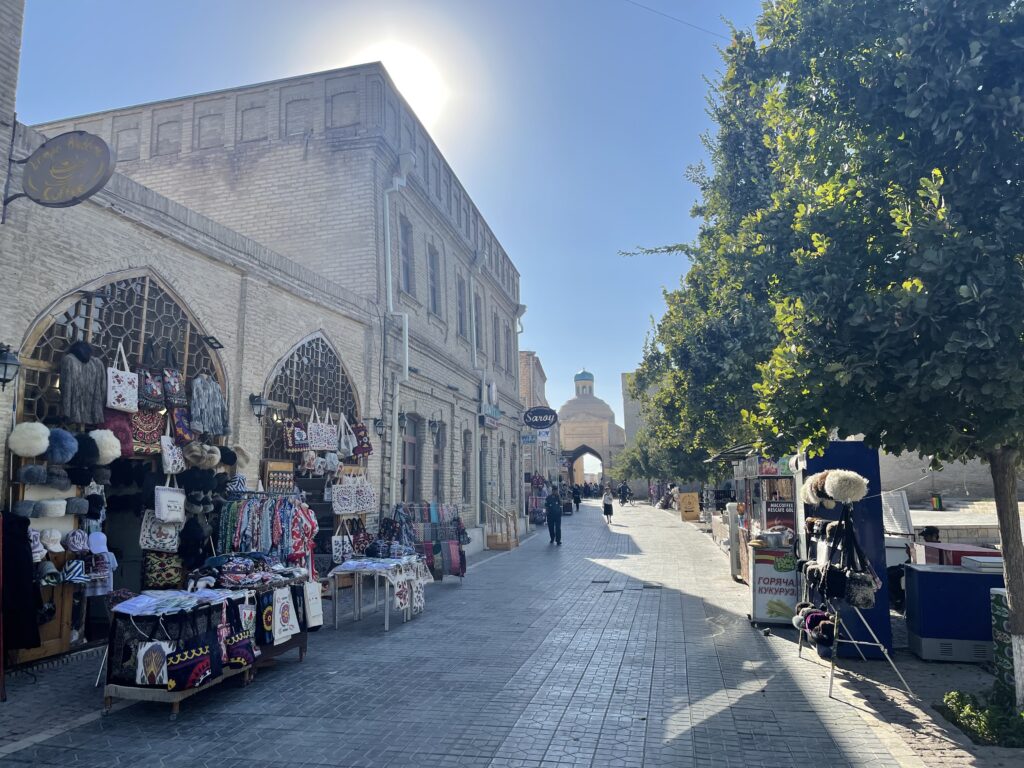
Disclaimer: This blog post may contain affiliate links. If you make a purchase through these links, I may earn a commission at no extra cost to you. Your support is greatly appreciated and helps me continue to provide valuable content. Thank you!
How Long to Spend in Bukhara
The perfect trip to Bukhara would be 2 to 3 days in length. There are dozens of historical monuments to visit but it’s not a huge city and you can walk around much of the city in a couple of days.
If you’re in a rush then you can condense your trip to one day but you’ll struggle to take in the city’s vibrant atmosphere and see all the sights in this time frame.
Bukhara Itinerary
Note: I’ve written these suggested itineraries by considering the popularity and location of the landmarks and monuments, starting with the easiest areas to visit. Take each day with a pinch of salt and feel free to mix it up.
Day 1: Bukhara Old City’s Main Attractions
If you only have one day in Bukhara then you had better make it count! You can easily walk around the main attractions of the old city in one day and experience the majority of Bukhara’s most beautiful places to visit.
Lyabi Hauz
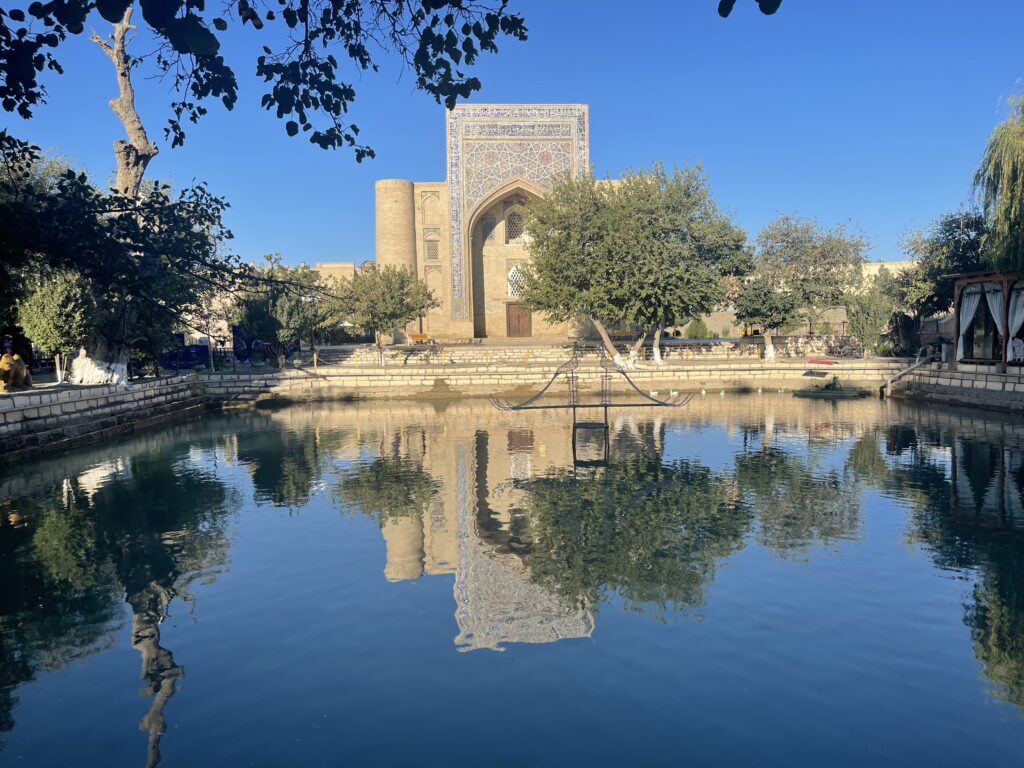
The Lyabi Hauz Ensemble is probably the most popular spot for tourists in Bukhara. The centerpiece of this area is a large man made pool thought to have been constructed in 1620.
If you only have half a day in Bukhara make sure to visit this area.
The monuments around Lyabi Hauz make a mini hub of history. You’ll find some amazing buildings like the picturesque pondside Nadir Divan Begi Khanaka, the huge Kukeldash Madrassah, and the Nadir Divan Begi Madrasah with its impressive yet unusual mosaics including mythical birds.
Just behind the Lyabi Hauz complex lies the Magoki Attori Mosque, one of the most unique buildings of the old town. Thought to have been originally constructed in 714 on the site of a Zoroastrian temple, the mosque is the oldest in Bukhara, surviving several fires.
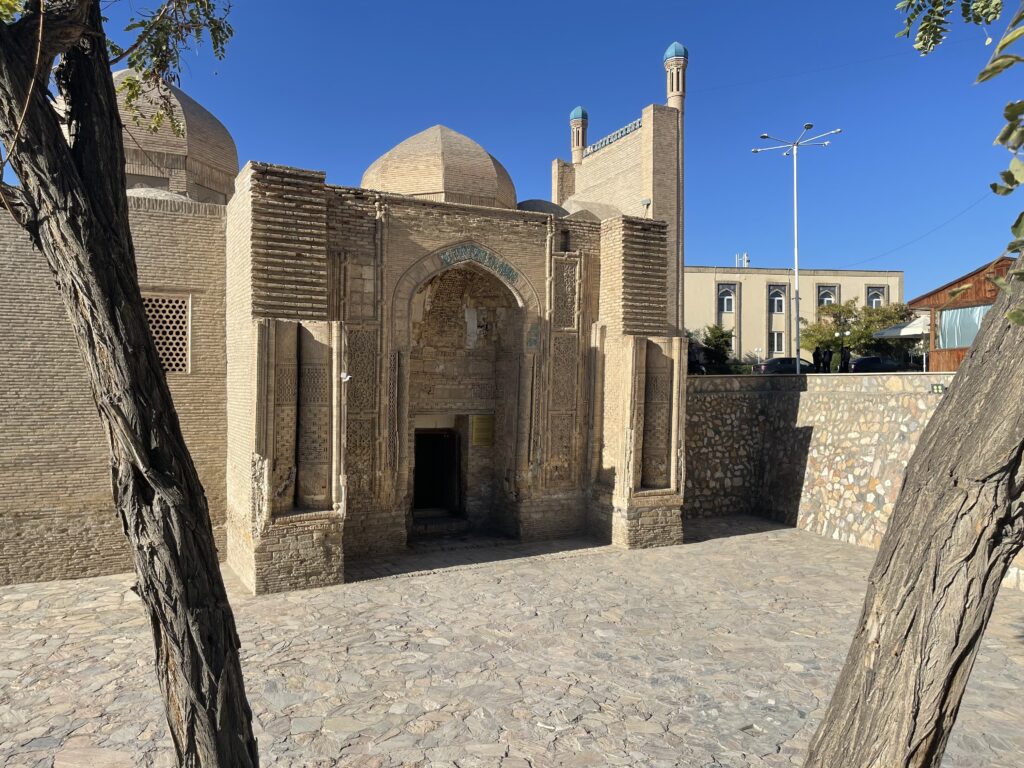
It’s one of the few unpolished monuments in Uzbekistan which exude a genuine ancient feeling, its crumbling entrance adding to its authenticity.
There’s also the chance to do some shopping in this corner of the city. Toki Sarrofon, one of the city’s famous trading domes, has vendors selling traditional clothes and souvenirs. You’ll also find several small shops selling silk rugs in this area.
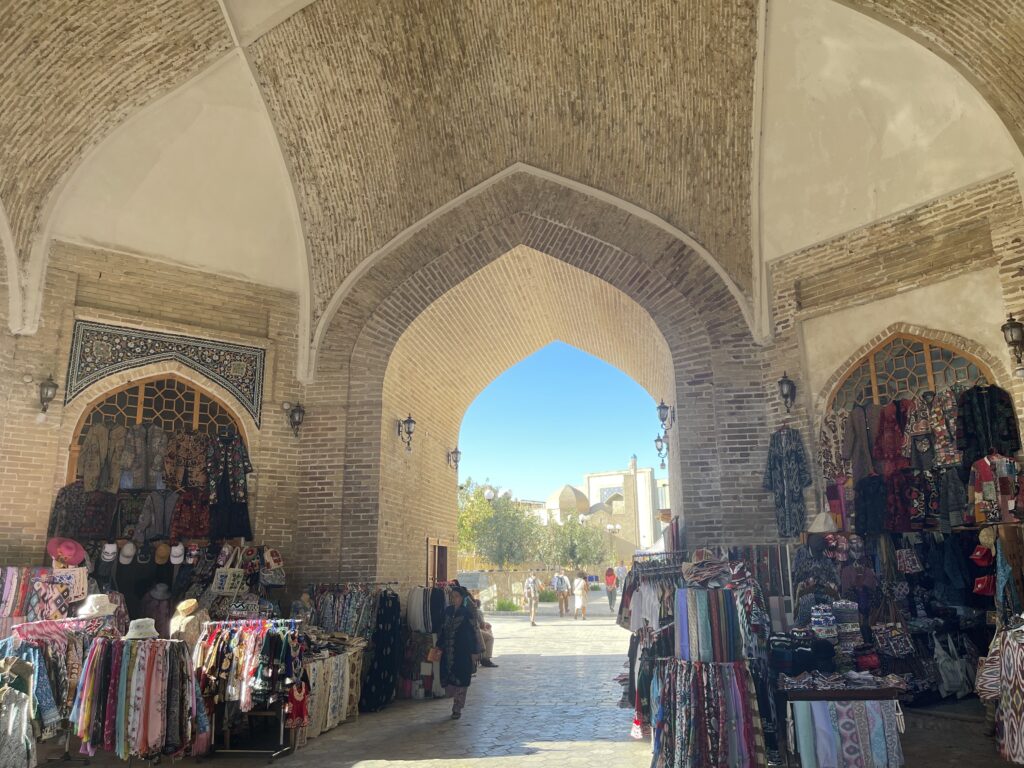
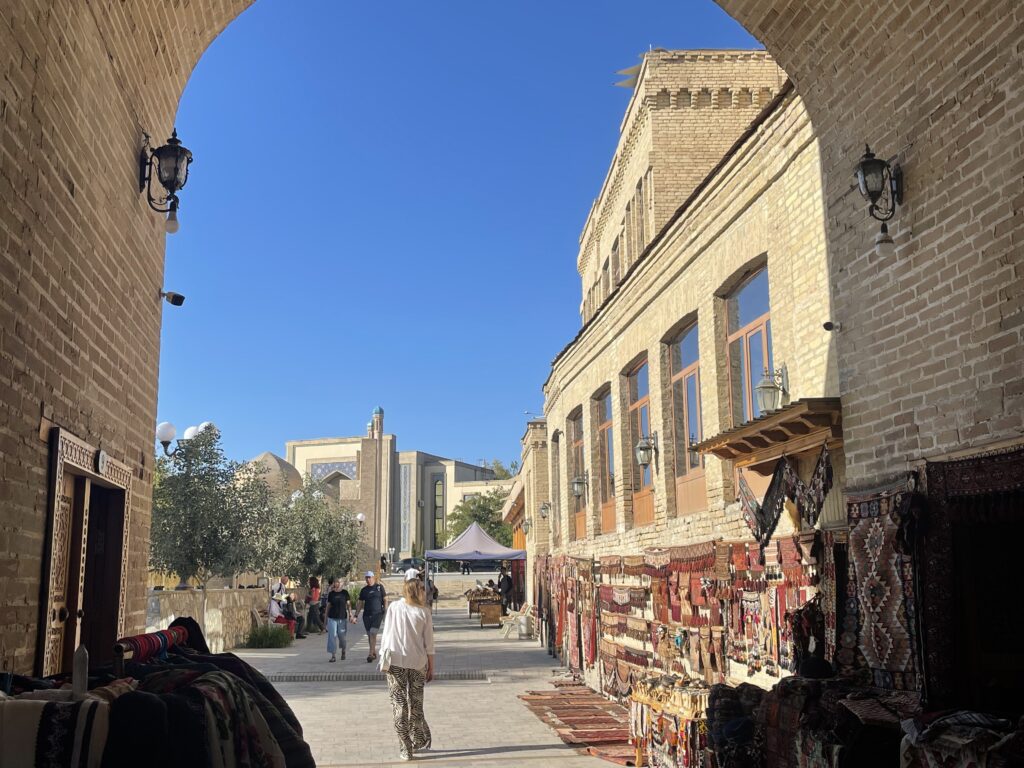
For lunch try one of the restaurants around the Lyabi Hauz pool. They cater to mainly tourists and although the service might not be the fastest in the world, the food quality is certainly not bad, especially for the price and location.
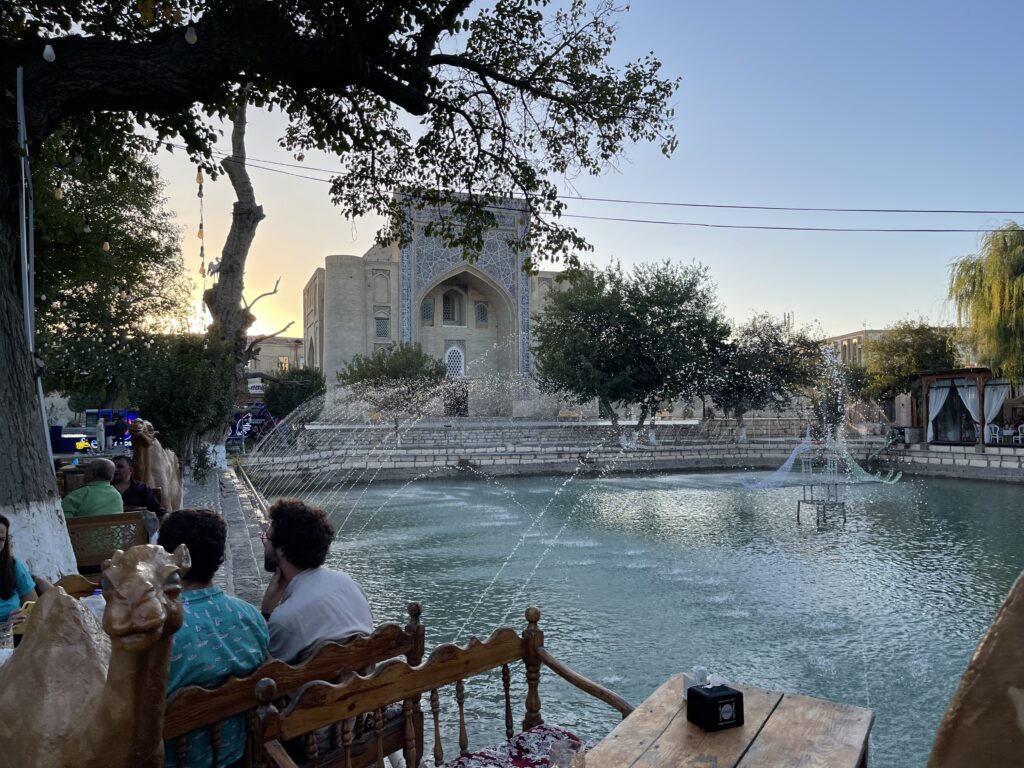
Afternoons in Uzbekistan can be hot so if you’re looking for some shelter from the sun the next couple of areas have plenty of indoor activities.
Walk from Lyabi Hauz up to the Northern part of the Old City, passing through Toqi Telpakfurushon, the largest trading dome built in 1571. Here is more opportunity to browse for souvenirs including traditional hats, scarves, handbags, art work, and more.
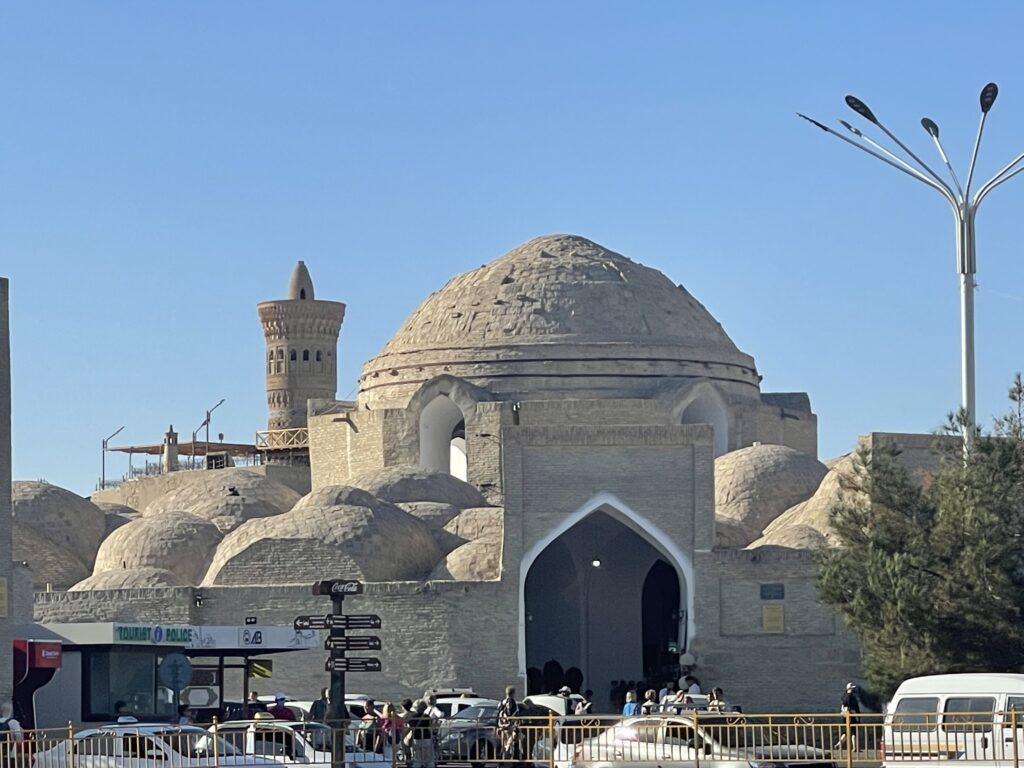
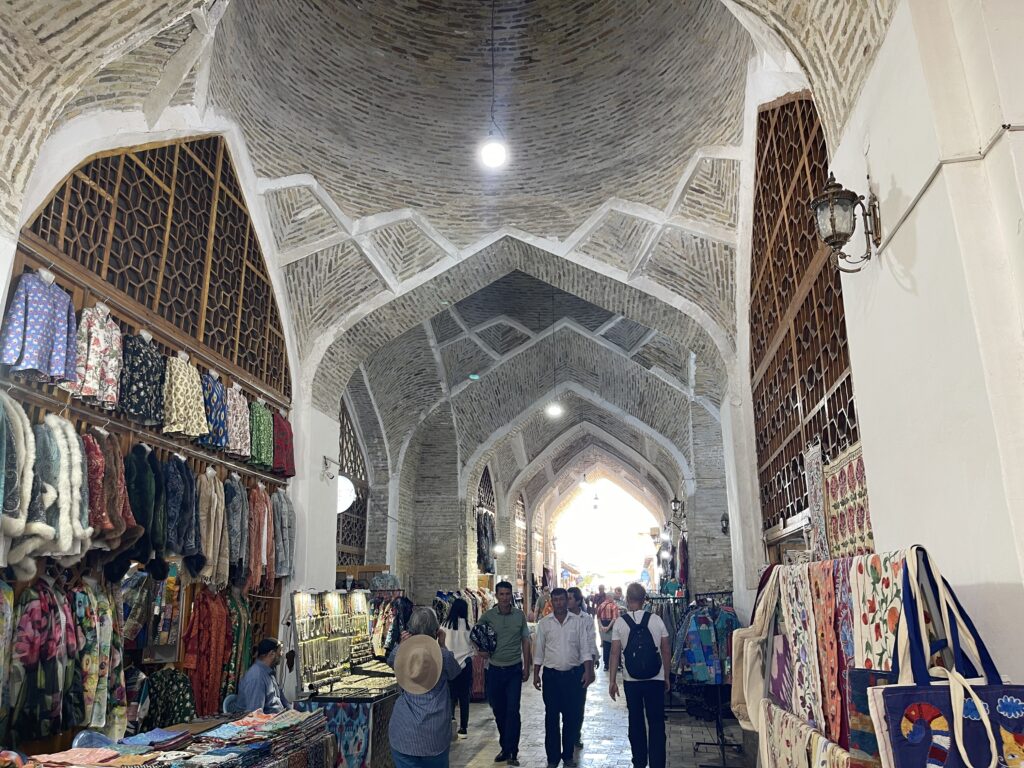
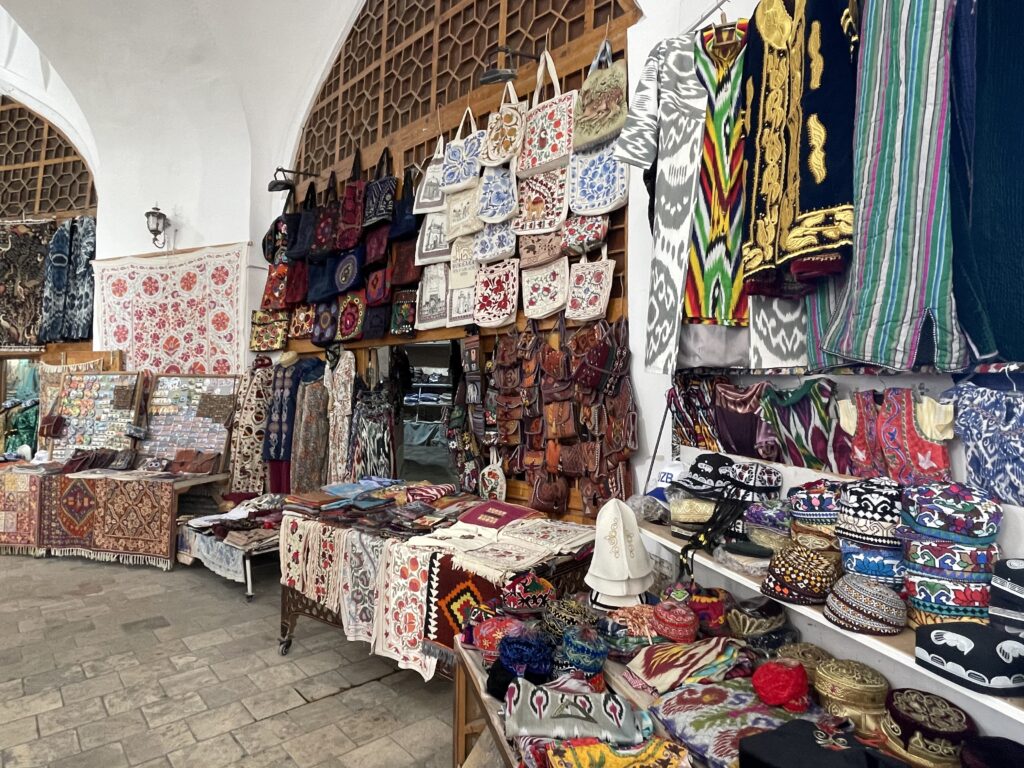
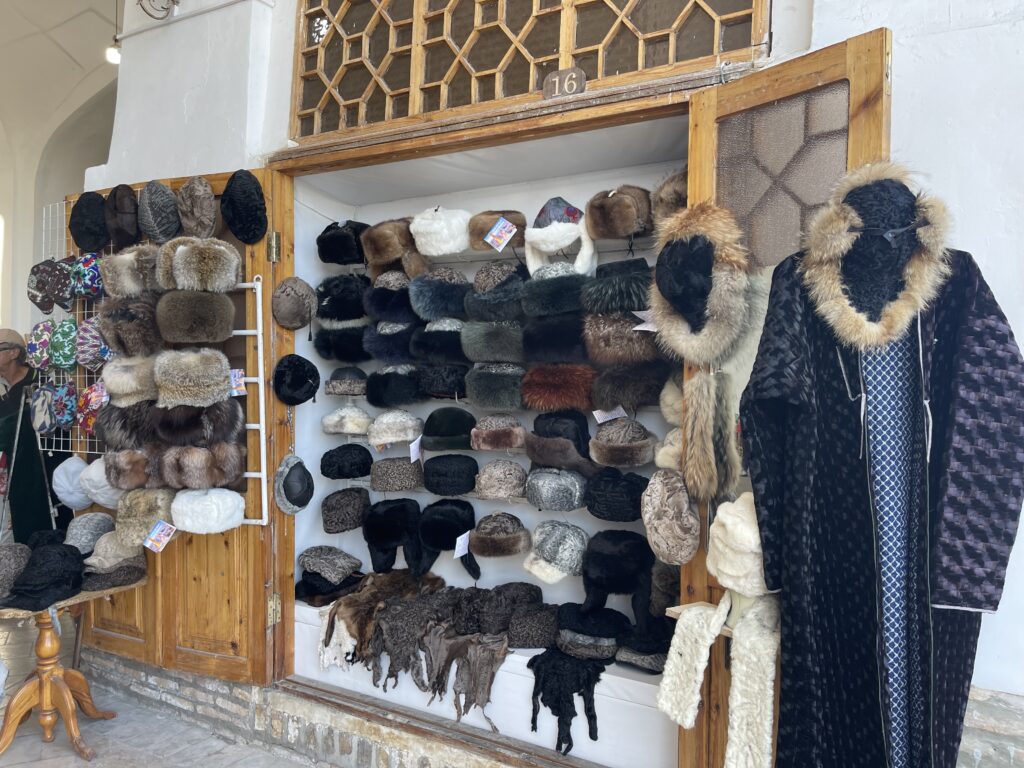
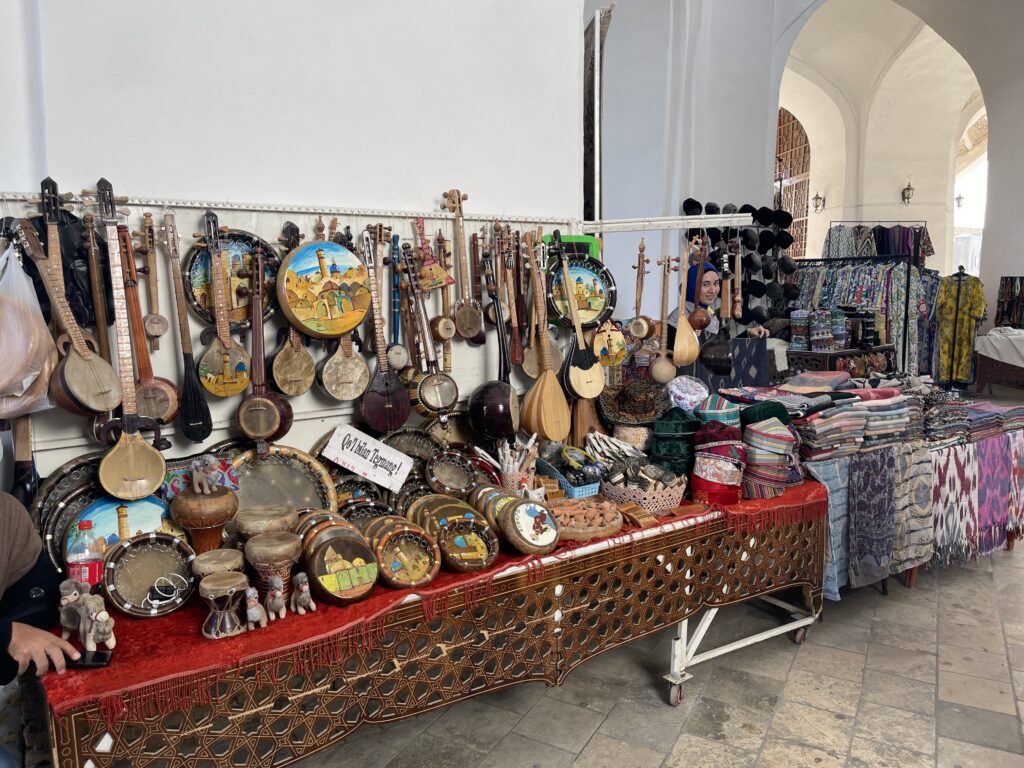
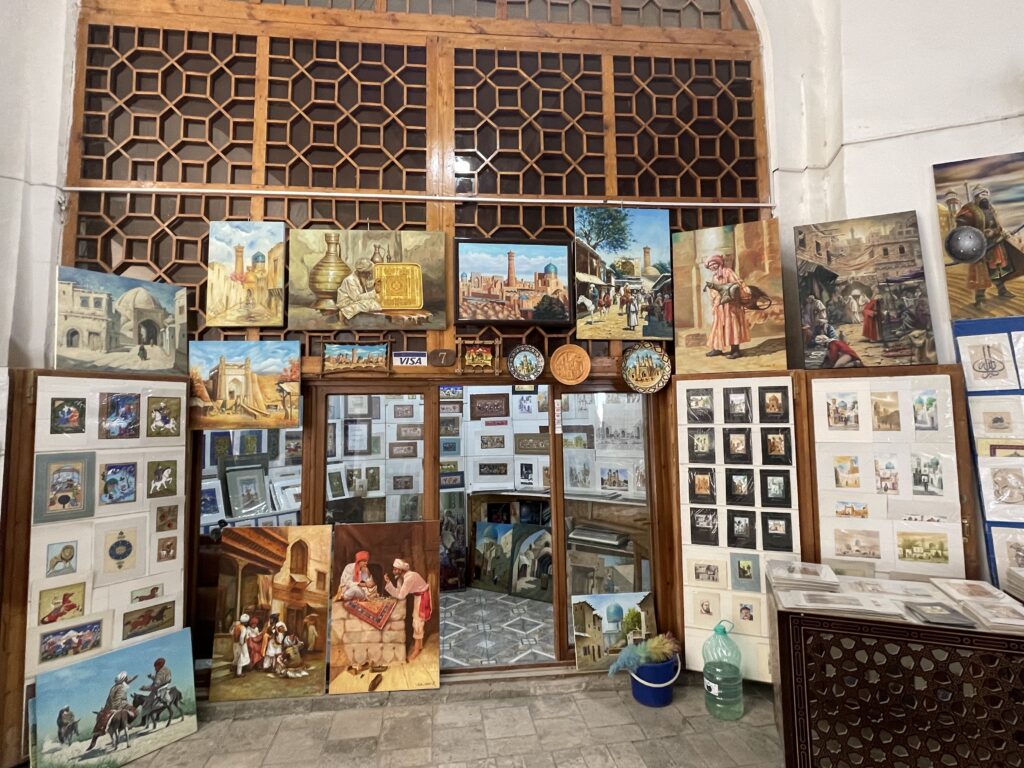
At the exit to this trading dome, there are a number of things to do such as knife making at the Museum of Metal Chasing or the Hamman Bozori Kord, a bathhouse dating from the 14th century and still operating today!
If you’re feeling thirsty then stop off at the Silk Road Tea House for refillable tea, coffee and Uzbek style sweets such as halva and navat, allowing the aroma of mixed spices to greet you at the entrance.
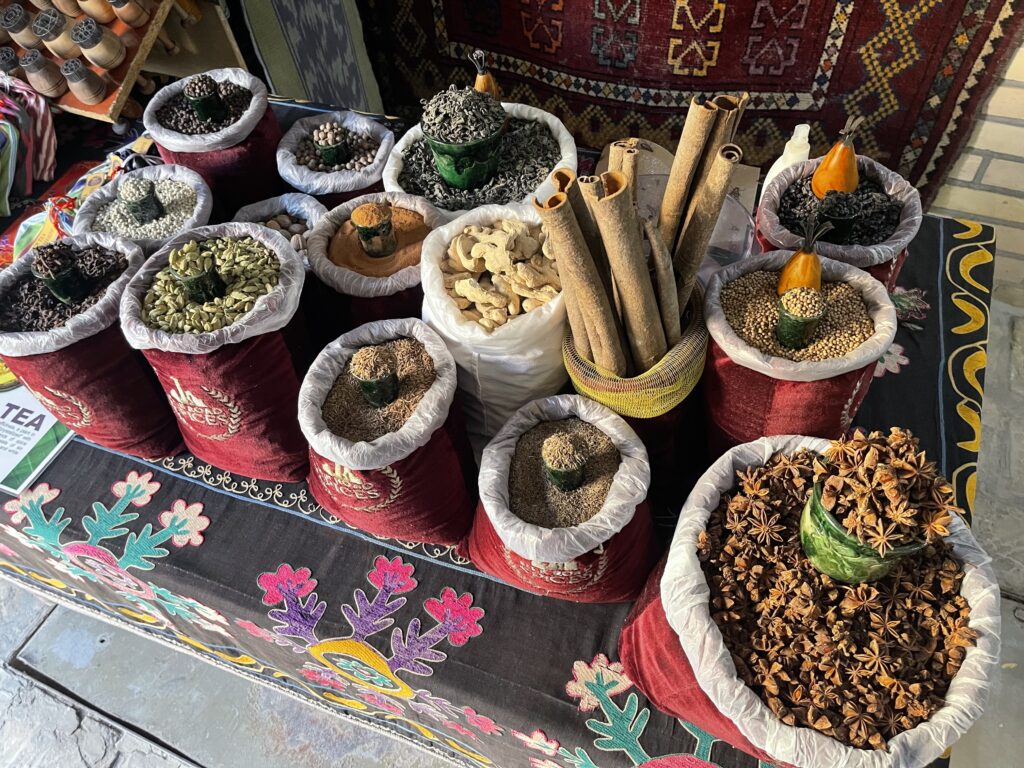
Once the afternoon heat subsides, stroll up the street toward the Ulugbek Madrasah and the Abdulaziz Khan Madrasah, elegant Islamic school structures facing each other. For a small fee both can be entered but the elaborately decorated portals themselves are the main attractions here.
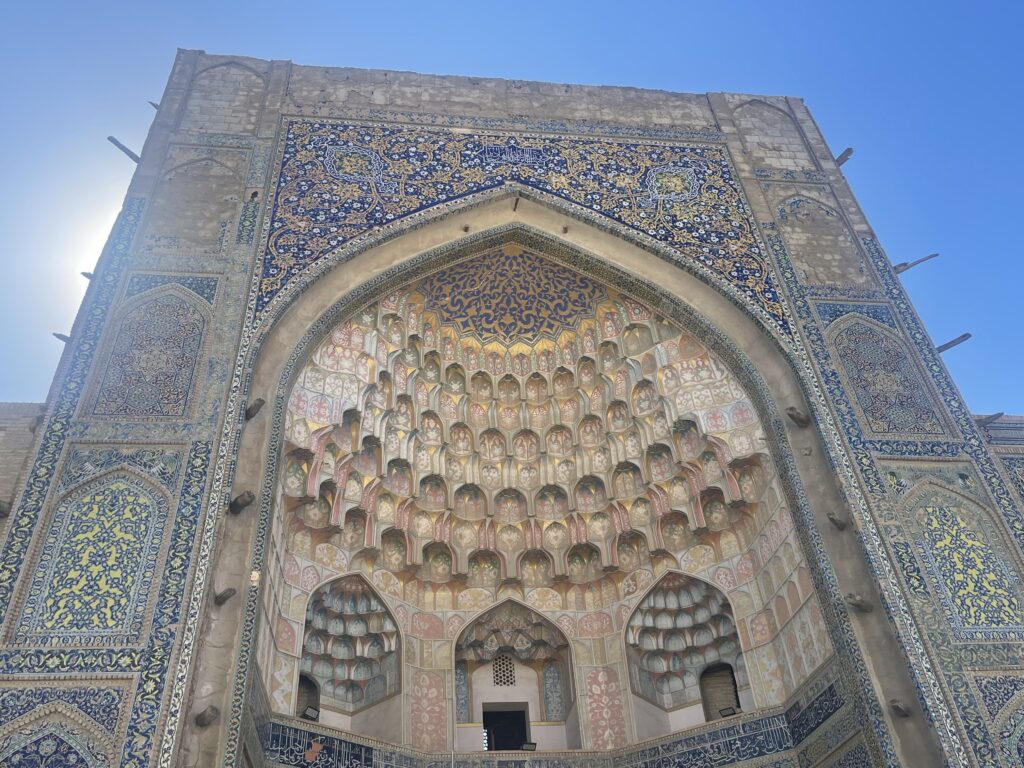
The Po-i Kalyan complex consists of three separate structures and is one of Bukhara’s top attractions. The Kalyan Minaret, the oldest of the structures, is a 45m high circular tower originally built in the 12th century.
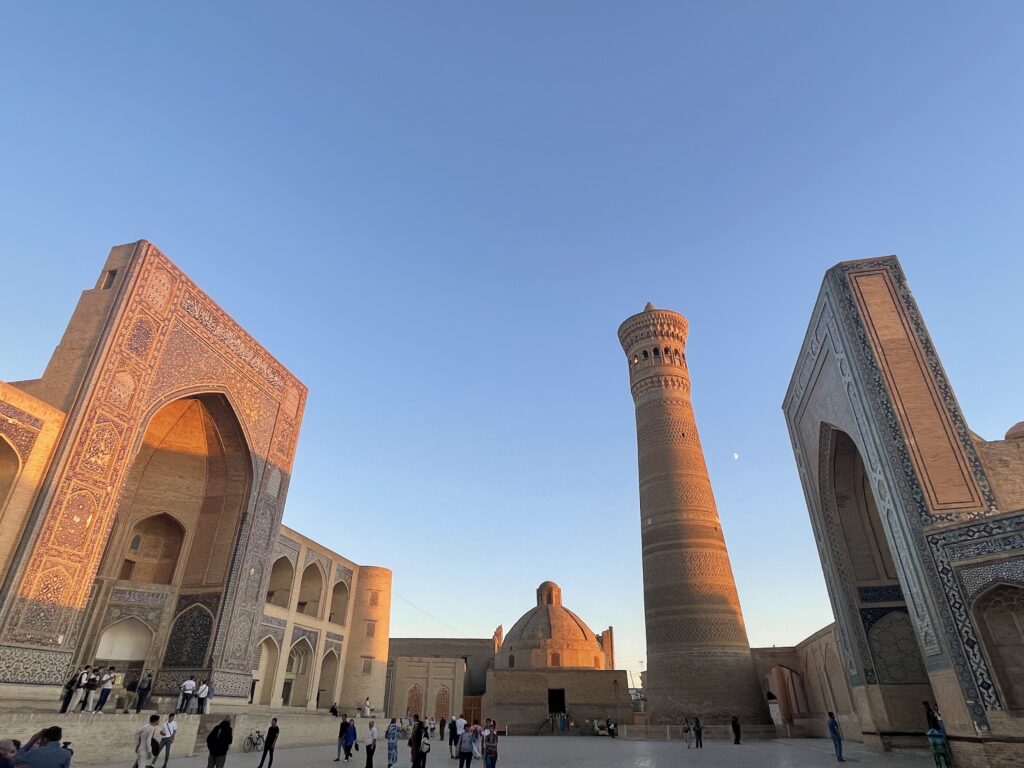
The tower has a grisly history as it was used to execute criminals by throwing them to their death from the top, earning it the nickname ‘Tower of Death’. Legend claims that it was spared from destruction by conqueror Genghis Khan as his helmet fell off his head as he peered up at it.
The complex also includes the 16th century Mir-i-Arab Madrassah which still functions today, as well as the 15th century Kalyan Mosque with its large courtyard lined with arches and domes. The Kalyan Mosque is well worth a visit and costs just 5,000 Som ($0.40) to enter.
As late afternoon turns into early evening, visit the Ark of Bukhara, a huge fortress with walls as high as 20m and the oldest remaining structure in the city. Dating from the 5th century, it has come under attack and been rebuilt numerous times over the centuries. These days it houses a museum which you can enter for a small fee.
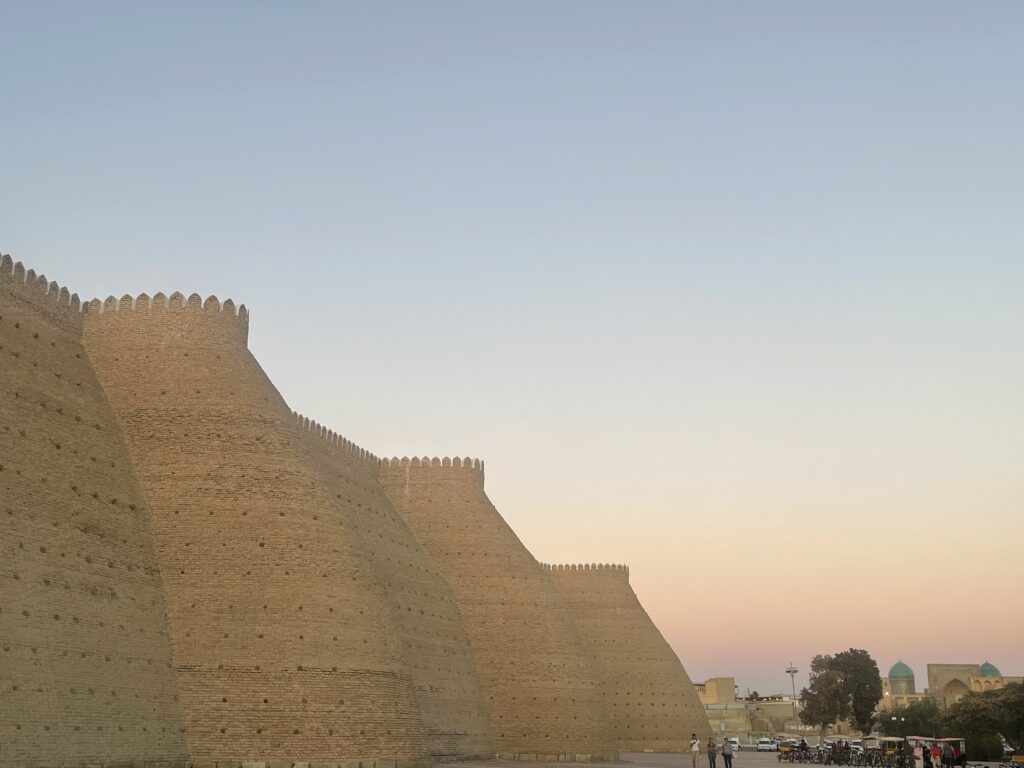
If you’re not scared of heights, the Ark can be viewed from Bukhara tower observation deck just across the street. Taking the glass elevator up to the top gives you not only a bird’s eye view of the fortress but also a great view of Bukhara city.
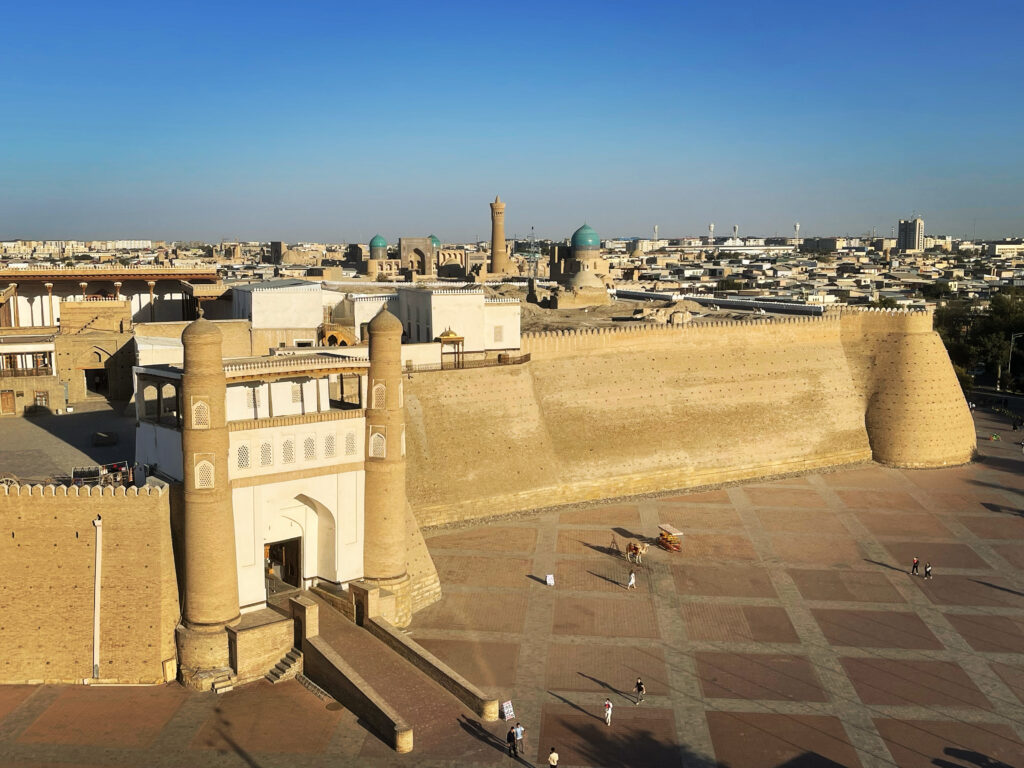
As the sun starts to set, walk just a few minutes to the 17th century Bolo Hauz complex which comprises Bolo Hauz mosque, pond and minaret. It’s one of my personal favorite places in Bukhara due to its uniqueness.
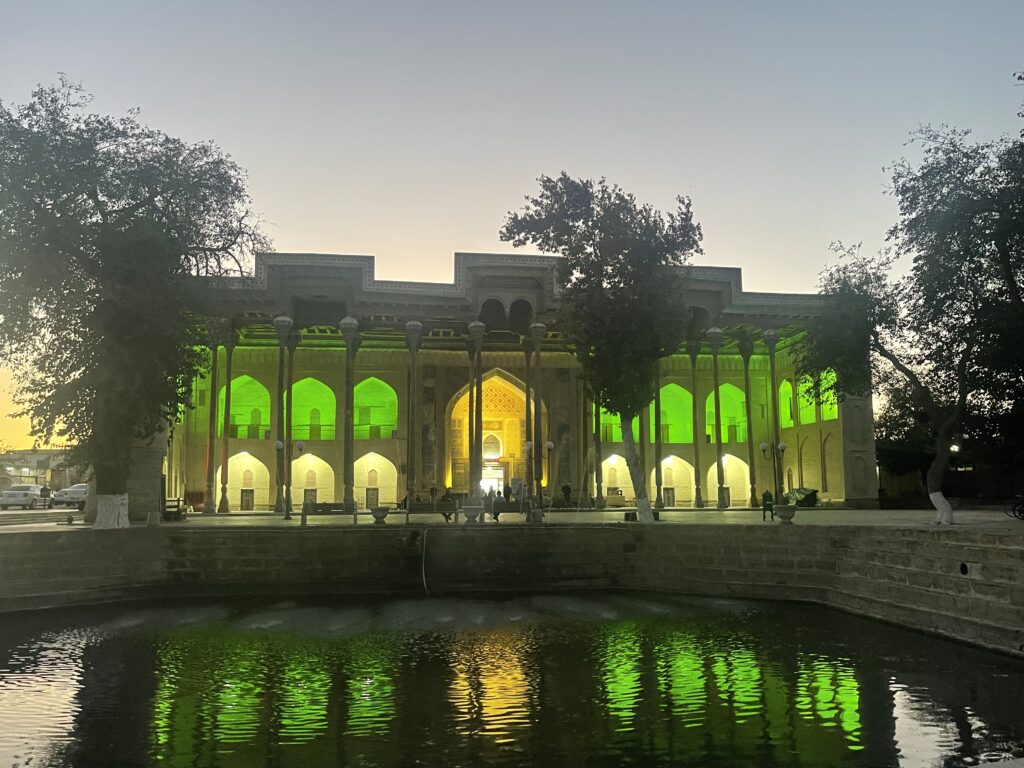
The mosque, still very much in use today, has a number of large wooden poles propping up the beautiful wooden and tiled ceiling of the entrance. If you happen to be there as the sun disappears, the mosque and minaret become illuminated in green and white light, making it one of the most unique sights of Bukhara city. The view from across the pond is especially pleasant.
After a day of walking around most of the old city, why not try one of the many popular restaurants that Bukhara has to offer. For Uzbek food in a beautiful setting head to Old Bukhara restaurant with its balcony or Mavrigi restaurant set inside an old madrasa with a beautiful courtyard.
For somewhere a little more lively try Joy Chaikhana Lounge with alcohol and live music.
Day 2: Old City and Surrounding Area
On day two enjoy a coffee at Wishbone Cafe or one of the many cafes in Bukhara and allow yourself to catch up on any sightseeing missed from a busy first day.
Some other attractions in the city center include the Doll Museum, the Bukhara Synagogue, and the Tim Abdulla Khan Trading Dome. Then it’s time to visit some of the monuments just outside of the city center.
Chor Minor, meaning four minarets, is a peculiar building which used to be a part of large madrasa. Although the building style itself is quite unique, each corner has a turquoise tower, uniquely decorated in typical Uzbek style.
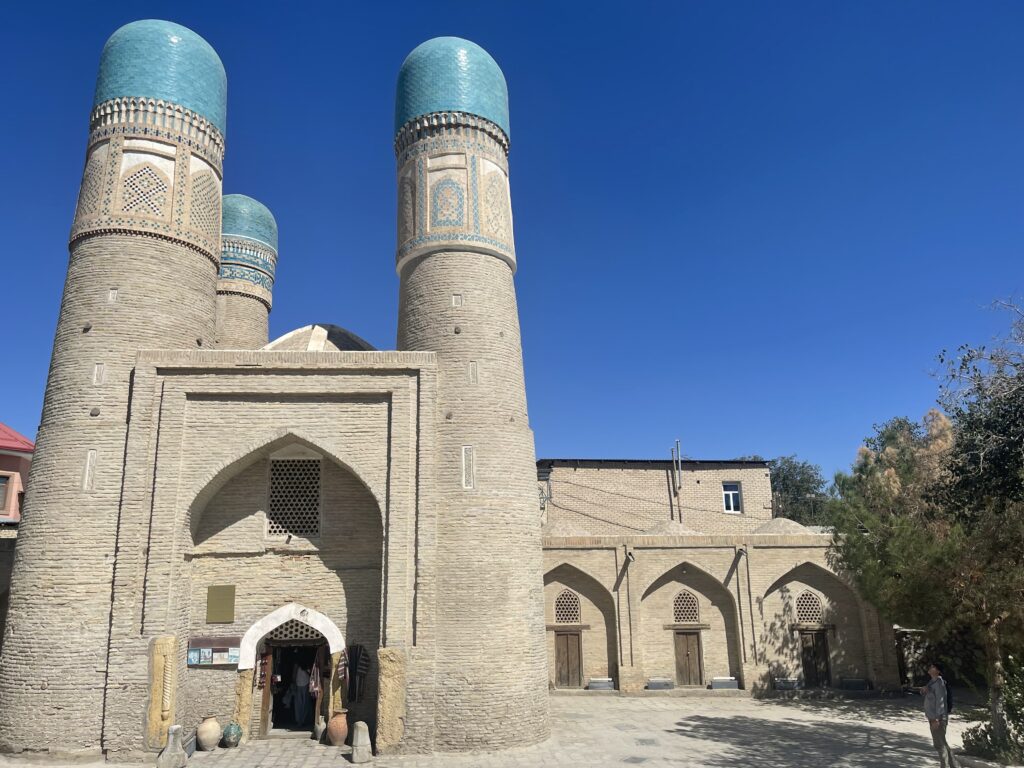
Inside the building is a tiny souvenir shop and for a small fee you can walk up the steps to the top of the tower.
Surrounded by a quaint courtyard, this structure was built in 1807 and lies in the backstreets of Bukhara in a residential area. Walking through the maze of backstreets to find the Chor Minor is half of the fun as many of the streets turn into dead ends and online maps aren’t accurate.
For lunch on the second day, I personally decided to try some Bukhara plov at the creatively named restaurant ‘The Plov’. From Chor Minor you can walk to the main street and take a taxi but it’s much more interesting to walk up through the backstreets of the city, past the narrow streets and baked-mud walls for 20 minutes.
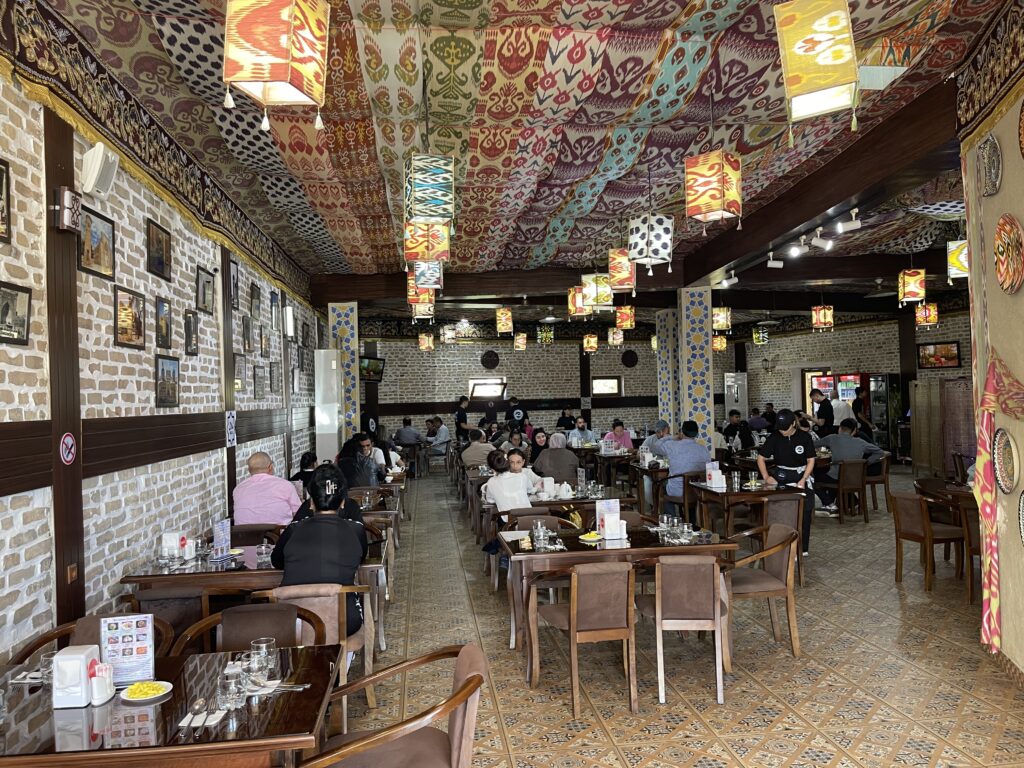
The Plov is one of the best places to try plov in Bukhara as they have cheap, good quality food and English speaking staff in a modern style restaurant.
After lunch take a taxi to the Fayzulla Khodjaev Museum. Fayzulla Khodjaev was born to wealthy Bukhara merchant Ubaydullo Khoja Kasym Khodjaev who originally bought this 19th century house. He was not a businessman himself but a politician, serving as first head of the Bukhara People’s Soviet Republic.
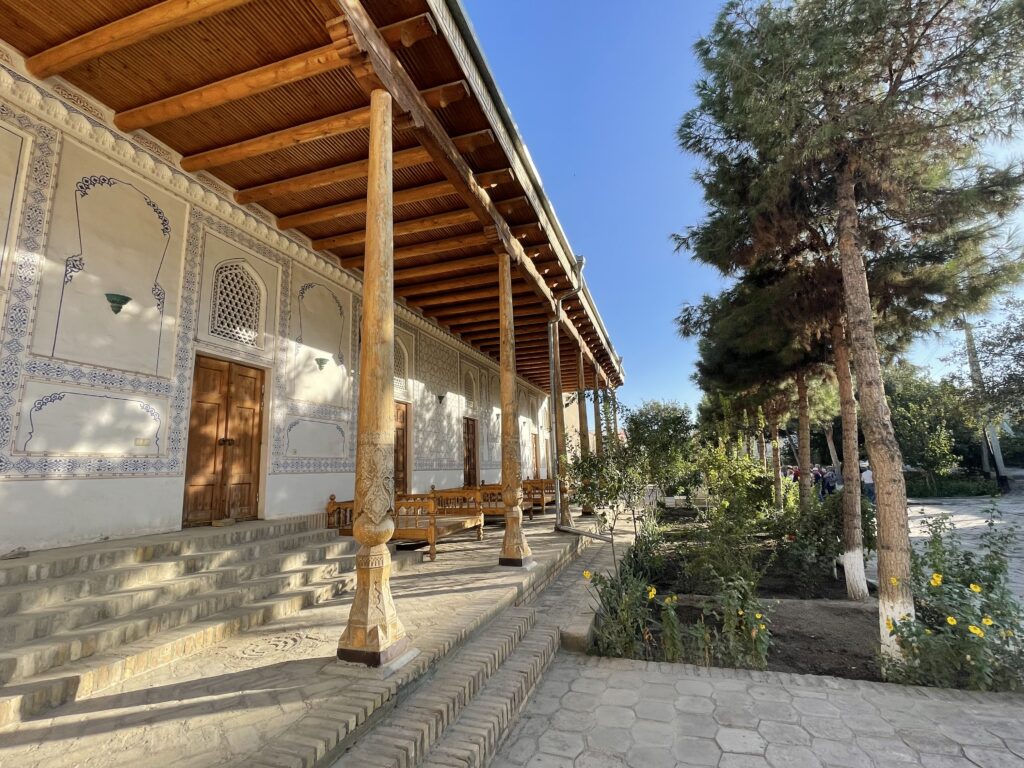
Fayzulla Khodjaev was executed in 1938 for crimes against the state, a controversial sentence, for which he was exonerated in 1966. Visitors to the museum can expect a biography of Fayzulla Khodjaev as well as exhibitions showcasing Bukharan life, such as crockery, musical instruments, traditional clothing, and everyday silverware from the 19th and 20th centuries.
From here it’s a 20 minute walk to Samonids Recreation Park, one of the largest green areas in Bukhara, but more commonly known as being home to the Ismail Samani Mausoleum.
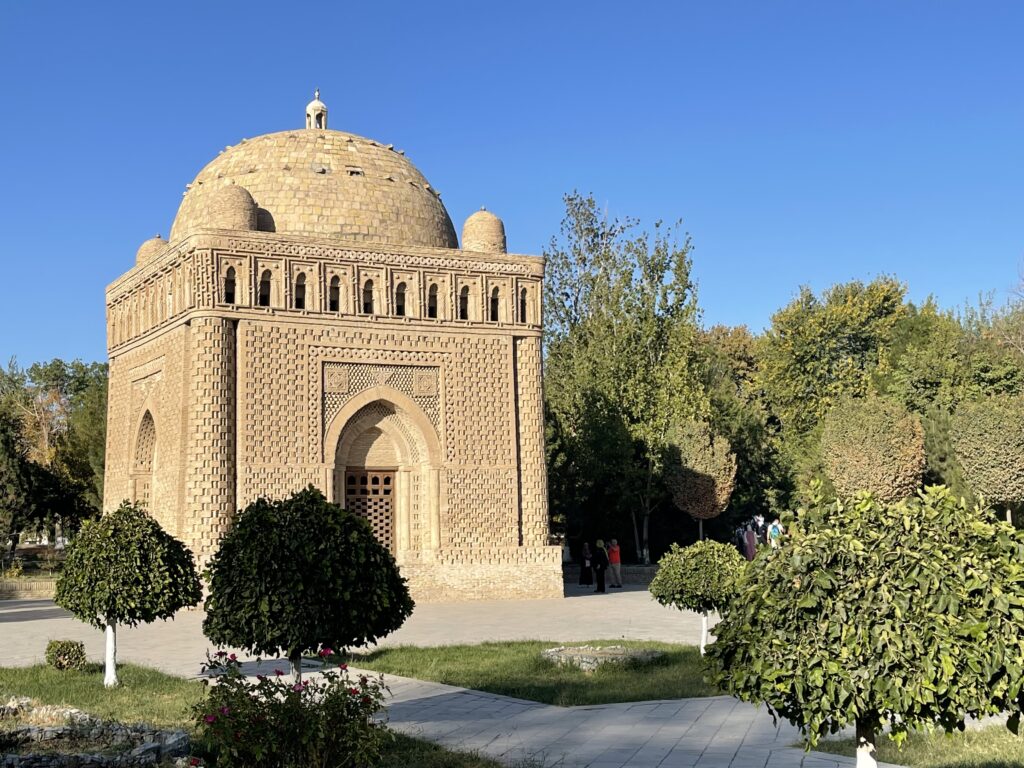
The Ismail Samani Mausoleum is the oldest monument in Bukhara, having been completed in 905. It is believed to have been built for Ahmad ibn Assad, the father of Ismail Samani, the founder of the Samanid dynasty. Later, Ismail Samani and his grandson were also buried there.
Its remarkable geometric design, derived from pre-Islamic and Zoroastrian influences, showcases intricate brickwork and symbolizes a turning point in Central Asian architecture post-Arabian conquest.
The Chashma Ayub Mausoleum is associated with the legend of the Prophet Job, believed to have struck the ground with his staff, bringing forth a healing spring that saved the people of Bukhara from a severe drought. It’s located just a few minutes walk from the Ismail Samani Mausoleum.
Constructed in the 12th century by the Karakhanid rulers, the mausoleum underwent several reconstructions until Tamerlane’s reign. It features four rooms topped with domes and houses a museum of water today, commemorating the legend of Prophet Job.
If you make it this far you’re just a few minutes to the lesser visited 16th century Talipach Gate and the remains of the city’s defensive walls.
You’re also on the doorstep of Bukhara’s Central Bazaar where you can buy all kinds of dried fruits and nuts; spices such as cinnamon, saffron, and cloves; non (Uzbek bread); and plenty of seasonal fruits and vegetables.
After making your way back into the old city, treat yourself to a beer, wine or cocktail at one of Bukhara’s bars. There aren’t so many but Aladdin Lounge Cafe becomes lively with local music and Andara Restaurant Rooftop Bar is a cool place for wine and cheese.
Day 3: Bukhara Suburbs
On the final day explore beyond the city’s walkable area to discover the city’s lesser visited but historically significant landmarks.
Originally a summer retreat for Emir Nasrullah Khan, the Palace of Moon-like Stars (Sitorai-Mokhi-Khosa) showcases a blend of Oriental and Western architecture. The White Hall, adorned with intricate designs and numerous mirrors, stands as a highlight within its extensive exhibition space for Bukharan art and artifacts.
Named after Emir Nasrullah Khan’s beloved wife, the original palace was destroyed as was the next palace of the same name. The current palace was constructed in the early 20th century and apparently used 5kg of gold to decorate the interior.
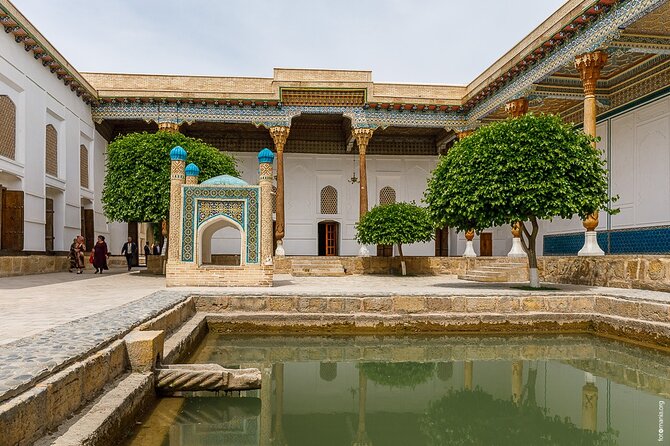
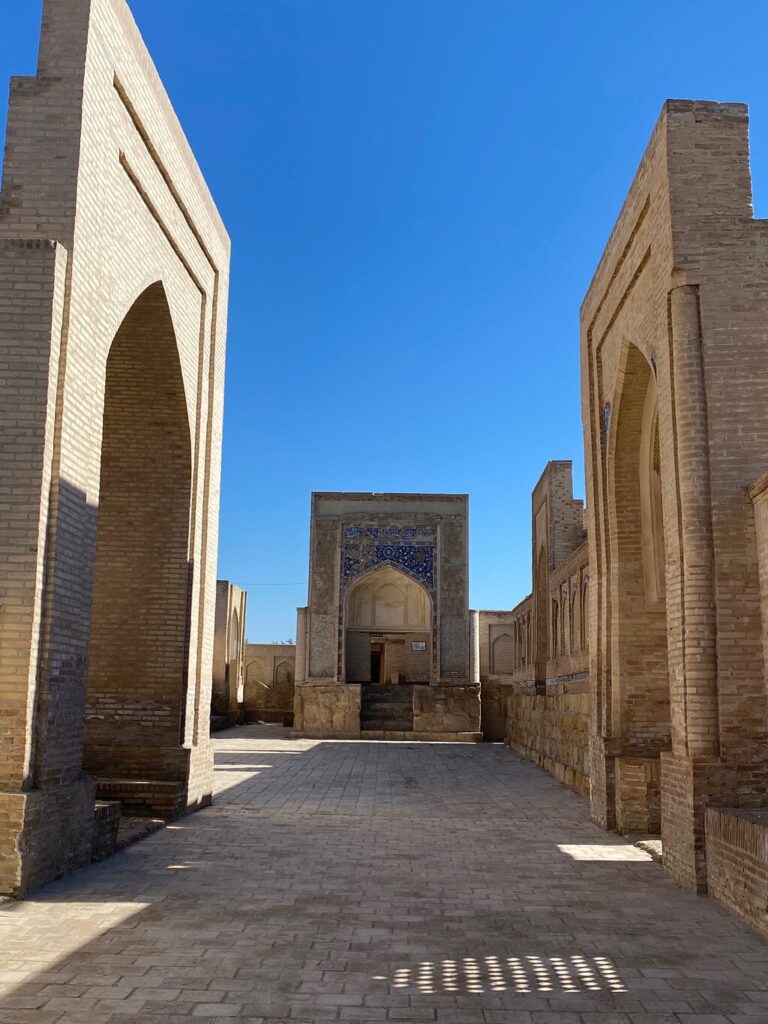
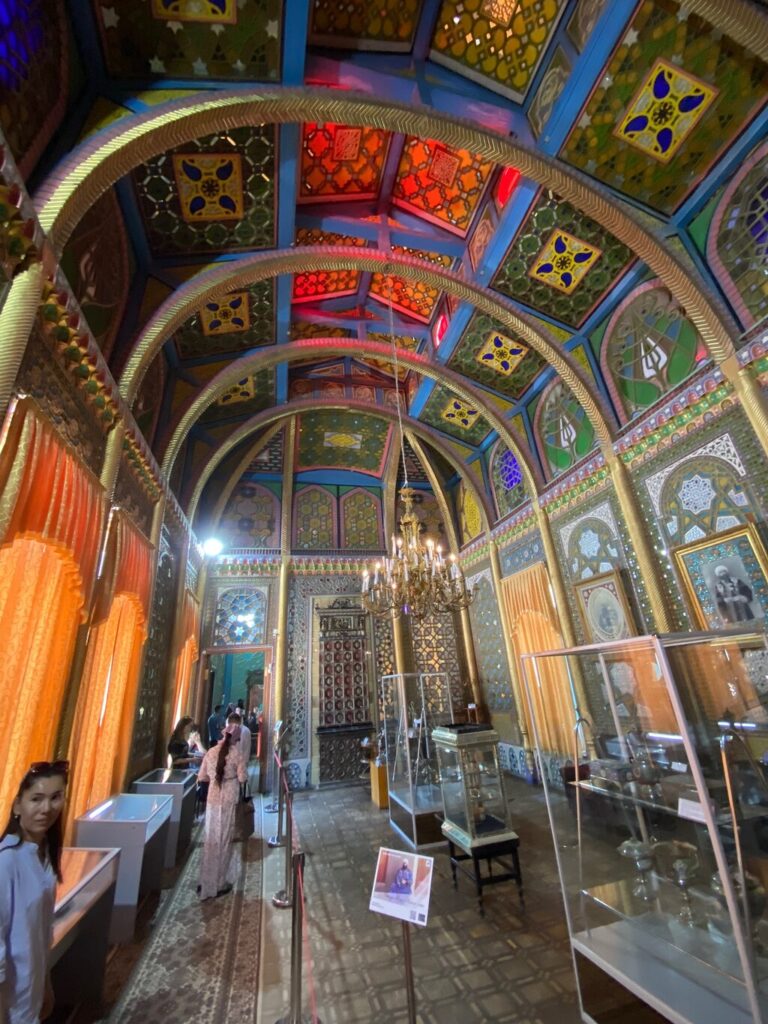
Next visit the Bakhautdin Nakhshbandi mausoleum complex, located about 12 kilometers northeast of the city. It’s a significant site linked to the founder of a prominent Sufi order, offering insight into Central Asian spirituality.
The complex includes mosques, tombs, and a tree believed to have sprouted from the saint’s staff, where people tie wishes. The museum there provides an in-depth look into Sufism and the saint’s life. It’s an incredibly serene spot, offering a genuine glimpse into Uzbekistan’s spiritual history.
The Chor-Bakr Necropolis, a memorial complex dating back the the 10th century, evolved into a necropolis housing the tombs of Djuybarsk sheikhs and descendants of Abu-Bakr, a relative of Prophet Muhammad.
It grew significantly in the mid-19th century with the addition of the khonaqo, mosque, and minaret. The rustic charm and minimal restoration offer a serene, off-the-beaten-path experience, quite different from Bukhara’s more extravagant sites.
The complex, featuring 25 structures and serene courtyards, spans 3 hectares. It’s certainly not as fancy as elsewhere but offers a tranquil retreat for contemplation and relaxation, especially for those fascinated by history and spirituality.
This is the place to visit if you really want to explore. Expect fewer tourists and more farm animals!
The complex includes mosques, tombs, and a tree believed to have sprouted from the saint’s staff, where people tie wishes. The museum there provides an in-depth look into Sufism and the saint’s life. It’s an incredibly serene spot, offering a genuine glimpse into Uzbekistan’s spiritual history.
You can go around these places on your own by hiring a car or join a guided tour for a deeper dive into their cultural stories and historical importance.
The guides here really know their stuff and add layers of local stories that make the whole experience richer.
This guided tour takes you to all three monuments, including private transport, fully licensed tour guide, and all entry fees.
Where to Stay in Bukhara
Since a lot of the tourist spots and budget-friendly hotels are in Bukhara’s old city, it’s smart to snag a place near the center or on a nearby side street.
There are plenty of affordable hotels scattered around the old city, and most of the main sights are within a comfy 20-minute stroll.
Some of the best hotels in Bukhara include:
- Marhaba Boutique, rated 9.7
- Oasis Boutique, excellent value for money
- Amulet Hotel, best for comfort
For more information read our where to stay in Bukhara guide.